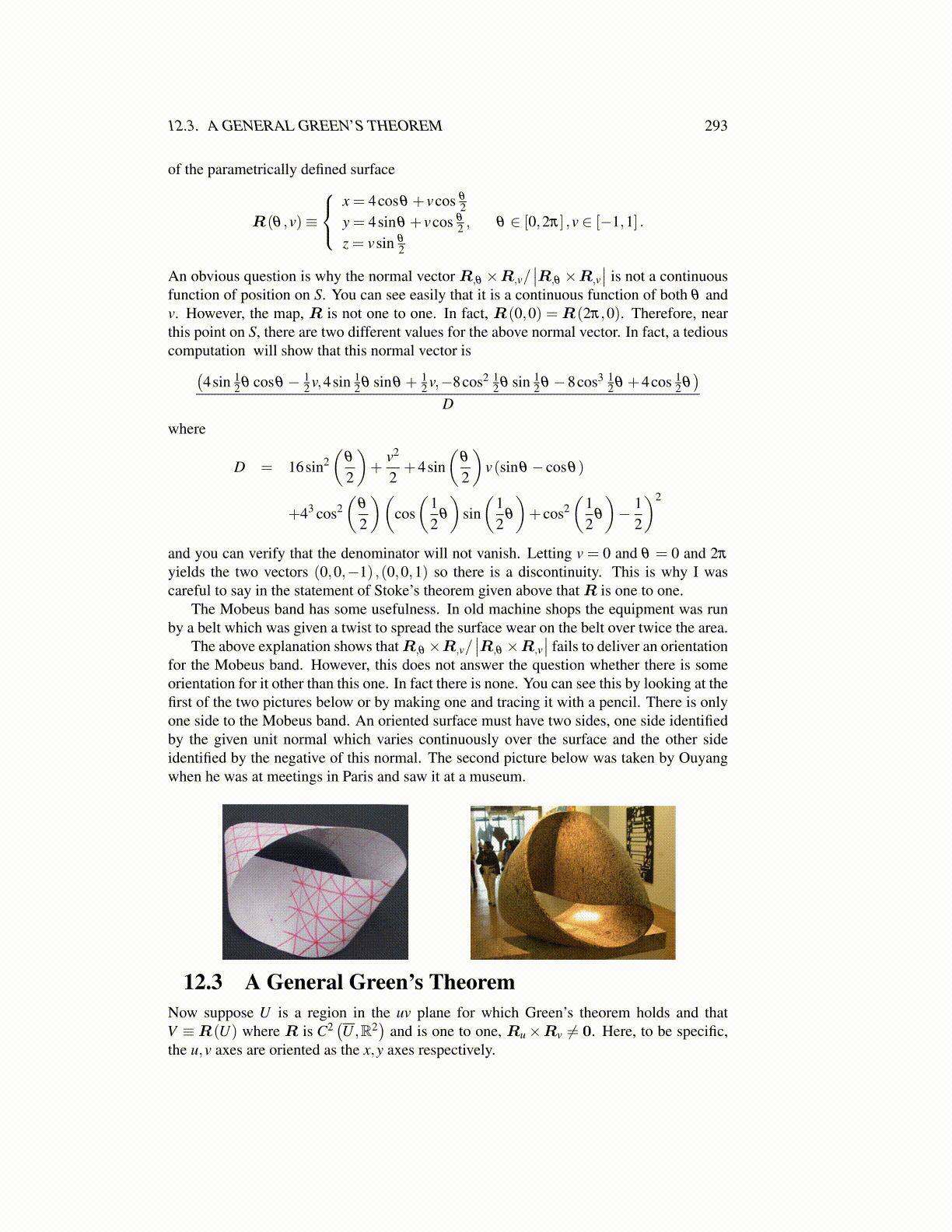
12.3. A GENERAL GREEN’S THEOREM 293
of the parametrically defined surface
R(θ ,v)≡
x = 4cosθ + vcos θ
2y = 4sinθ + vcos θ
2 ,
z = vsin θ
2
θ ∈ [0,2π] ,v ∈ [−1,1] .
An obvious question is why the normal vector R,θ ×R,v/∣∣R,θ ×R,v
∣∣ is not a continuousfunction of position on S. You can see easily that it is a continuous function of both θ andv. However, the map, R is not one to one. In fact, R(0,0) =R(2π,0). Therefore, nearthis point on S, there are two different values for the above normal vector. In fact, a tediouscomputation will show that this normal vector is(
4sin 12 θ cosθ − 1
2 v,4sin 12 θ sinθ + 1
2 v,−8cos2 12 θ sin 1
2 θ −8cos3 12 θ +4cos 1
2 θ)
D
where
D = 16sin2(
θ
2
)+
v2
2+4sin
(θ
2
)v(sinθ − cosθ)
+43 cos2(
θ
2
)(cos(
12
θ
)sin(
12
θ
)+ cos2
(12
θ
)− 1
2
)2
and you can verify that the denominator will not vanish. Letting v = 0 and θ = 0 and 2π
yields the two vectors (0,0,−1) ,(0,0,1) so there is a discontinuity. This is why I wascareful to say in the statement of Stoke’s theorem given above that R is one to one.
The Mobeus band has some usefulness. In old machine shops the equipment was runby a belt which was given a twist to spread the surface wear on the belt over twice the area.
The above explanation shows that R,θ ×R,v/∣∣R,θ ×R,v
∣∣ fails to deliver an orientationfor the Mobeus band. However, this does not answer the question whether there is someorientation for it other than this one. In fact there is none. You can see this by looking at thefirst of the two pictures below or by making one and tracing it with a pencil. There is onlyone side to the Mobeus band. An oriented surface must have two sides, one side identifiedby the given unit normal which varies continuously over the surface and the other sideidentified by the negative of this normal. The second picture below was taken by Ouyangwhen he was at meetings in Paris and saw it at a museum.
12.3 A General Green’s TheoremNow suppose U is a region in the uv plane for which Green’s theorem holds and thatV ≡R(U) where R is C2
(U ,R2
)and is one to one, Ru×Rv ̸= 0. Here, to be specific,
the u,v axes are oriented as the x,y axes respectively.